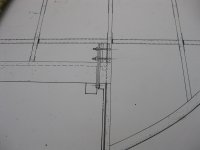TonyHallo
640cc Uber Pimp
Cut a hole in the firewall for the carburetor and velocity stack. The instruction manual warns against operating without the velocity stack as it will effect performance, my ram pipe information indicates the shape they selected will decrease performance by 1.2% to 5%. The shape is similar to 4 and 5 below but not quite curved as 10. I will run the engine with and without the velocity stack, I believe 11 would work the best in my case.



